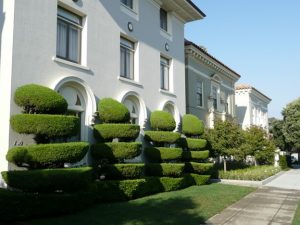Turf management is an essential aspect of maintaining a healthy and attractive landscape, whether it’s for a golf course, sports field, or residential lawn. Over the years, professionals in this field have revolutionized their practices to achieve more sustainable and efficient results. By incorporating new techniques, technologies, and strategies, they have transformed the way we think about turf management.
In this blog post, we will explore seven ways professionals are revolutionizing turf management practices. From using environmentally friendly methods to implementing cutting-edge technologies, these changes have not only improved the health and appearance of our turfs but also reduced maintenance costs and promoted sustainability. Let’s get to the list.
Using Environmentally Friendly Methods
One of the most significant ways professionals have revolutionized turf management practices is by adopting environmentally friendly methods. These methods focus on reducing the use of synthetic chemicals and promoting natural solutions for maintaining healthy turfs.
This shift has not only reduced potential harm to the environment but also improved the overall quality of the soil and turf. Some common environmentally friendly methods include composting, using organic fertilizers, and implementing integrated pest management techniques.
By reducing the use of harmful chemicals, professionals are promoting sustainability and creating a healthier ecosystem for both humans and wildlife. This approach has become increasingly popular in recent years as more people prioritize environmentally conscious practices.
Implementing Cutting-Edge Technologies
Another way professionals have revolutionized turf management practices is by incorporating cutting-edge technologies. As highlighted by the team behind Victory Turf, they use state-of-the-art equipment and tools to achieve efficient and effective results in your home and business landscape. Some of these technologies include automated irrigation systems, soil sensors, and remote-controlled mowers.
These advancements have not only made turf management more precise and efficient but also reduced the need for manual labor. With real-time data and analysis, professionals can make informed decisions about when to water or fertilize the turf, leading to cost savings and improved results.
Promoting Sustainability
Sustainability is a key focus for professionals in the turf management industry. By implementing environmentally friendly methods and embracing cutting-edge technologies, they are promoting sustainable practices that benefit both the environment and their clients.
This includes using sustainable irrigation systems, selecting drought-tolerant grass species, and incorporating drought-resistant landscaping techniques. By reducing water usage and promoting natural solutions, professionals are not only saving resources but also reducing maintenance costs for their clients. These sustainable practices also have a positive impact on the environment by conserving water and supporting local wildlife.
Incorporating Precision Agriculture Techniques
Precision agriculture techniques involve using data and technology to make informed decisions about managing crops and landscapes. Professionals have adopted these techniques to analyze soil quality, nutrient levels, water usage, and other factors that impact turf health. By pinpointing specific areas of concern, they can target treatments and reduce waste.
For example, using soil sensors, professionals can determine the exact amount of water needed for a specific area of turf, reducing excess water usage and promoting healthy growth. Precision agriculture techniques not only improve the health and appearance of turfs but also promote sustainability by reducing resources and costs.
Embracing Organic and Natural Approaches
In addition to using environmentally friendly methods, professionals have also embraced organic and natural approaches to turf management. This includes using organic fertilizers, composting, and incorporating natural pest control methods.
Organic and natural approaches promote healthier soil and turf by providing essential nutrients without the use of harsh chemicals. They also support a diverse ecosystem by promoting the growth of beneficial microorganisms and reducing harm to pollinators and other wildlife. By using these approaches, professionals are not only improving turf health but also creating a more sustainable and natural environment.
Utilizing Drones for Aerial Mapping and Analysis
Drones have become an essential tool for professionals in turf management. They are used for aerial mapping and analysis, providing a bird’s eye view of the turf and identifying areas that may need attention. This technology allows for more precise data collection and monitoring, leading to better decision-making.
Drones also help professionals save time and resources by quickly assessing large areas of land without the need for manual labor or expensive equipment. This technology has revolutionized turf management by providing a more efficient and cost-effective way to monitor and maintain the health of turfs.
Adopting Data-Driven Decision Making Processes

Data-driven decision making has become an integral part of turf management practices. By collecting data through various sources, such as soil sensors, weather reports, and drone mapping, professionals can make informed decisions about turf maintenance.
This data allows them to track changes in the soil and turf health, adjust treatments as needed, and predict potential issues before they become bigger problems. By adopting this approach, professionals can save time and resources while promoting sustainability through targeted and precise treatments.
Professionals have revolutionized turf management practices through the use of environmentally friendly methods, cutting-edge technologies, and data-driven decision making. These changes have not only improved the health and appearance of turfs but also promoted sustainability and reduced maintenance costs. As the industry continues to evolve, we can expect even more innovative techniques and strategies to be implemented for efficient and sustainable turf management.

Recent Comments